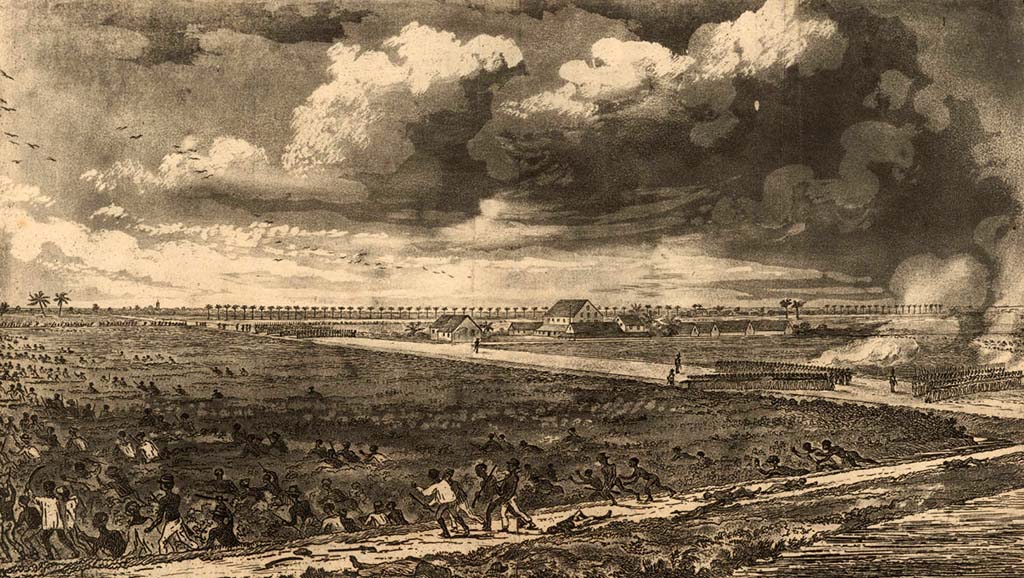Demerara Rebellion (1823)
Mon Aug 18, 1823

Image: Slave insurrection in Demerara colony, August 18th, 1823, Bachelor's Adventure, Plate 4, (Joshua Bryant, 1823) [blackpast.org]
On this day in 1823, more than 10,000 enslaved Guyanese people rose up against their oppressors. Rebels held whites hostage to make demands, but generally abhorred violence. The state declared martial law, killing hundreds of people and displaying their corpses as a warning to the survivors.
The revolt took place in modern day Guyana, then the British colony of Demerara-Essequibo. The colony's primary export was sugar, and enslaved black people drastically outnumbered other groups on the island. The year of the uprising, the population consisted of approximately 2,500 whites, 2,500 freed black people, and 77,000 slaves.
The rebellion was linked to the church of John Smith, a British missionary. One of the leaders of the uprising was Jack Gladstone, a cooper on the plantation where the rebellion started and the son of Quamina, a prominent member of Smith's church.
Upon learning of his son's plans, Quamina opposed the revolt, urging the planners to initiate a strike instead, and to not use violence. Quamina also informed John Smith of the plans, which Smith declined to disclose to the authorities.
On August 18th, 1823, more than 10,000 enslaved people rose up against their masters to demand better treatment. Rebels generally abhorred violence, choosing instead to hold whites hostage in their homes and stockades as leverage with which to make their demands. Despite the large scale of the revolt, some of the enslaved stayed loyal to their masters and defended their plantations.
The Governor immediately declared martial law, and, when a crowd of 2,000 rebels refused to disperse on order of a colonial militia, soldiers fired into the crowd, killing hundreds of people. Within two days, the rebellion was suppressed.
In the weeks following the suppression of uprising, the colonizers executed dozens of slaves, displaying the dismembered heads of those killed as a means of intimidation.
Jack Gladstone was sold and deported to St. Lucia, while Quamina was hunted down and killed on September 23rd. John Smith was arrested for not informing the government of the plans of rebellion and died in prison. Smith's death made him a martyr within the British abolitionist movement.
Under pressure from London, the Demerara Court of Policy passed various reforms for slave labor in 1825, institutionalizing working hours and some civil rights for the enslaved.
In 1833, the British government passed the Slavery Abolition Act, beginning a process of gradual abolition throughout its colonies.
- Date: 1823-08-18
- Learn More: www.blackpast.org, en.wikipedia.org.
- Tags: #Colonialism.
- Source: www.apeoplescalendar.org

